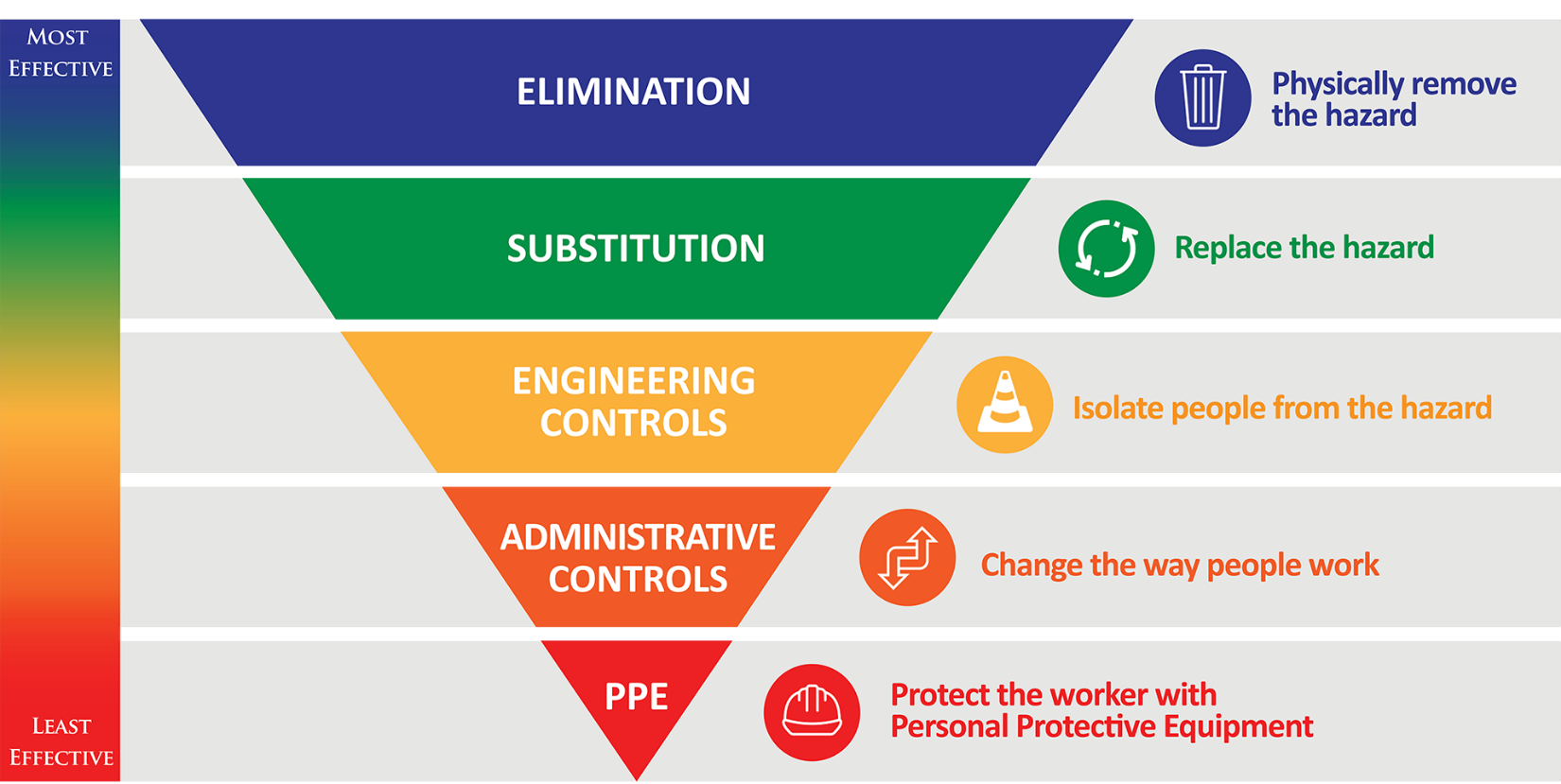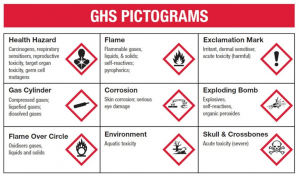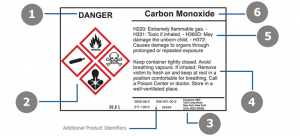- Homepage
- Departments
- Research Safety & Services
- Chemical and Lab Safety
- Chemical Hygiene Plan
Chemical Hygiene Plan
- Pest Management
- Fire Plan Review and Inspection
- Building Codes Enforcement
- ADA Assessment
- Applicable Building Codes
- Building Emergency Coordinators
- Certificate of Completion or Occupancy
- Chartfield Form Codes Permits
- Inspections
- Permit Application Process
- PERMIT APPLICATIONS AND FORMS
- Permit Fee Schedule
- Permit Instructions
- Plan Submittal Guidelines
- Temporary Structures on Campus – Including Tents
- Insurance and Risk Management
- Occupational Medicine
- Industrial Hygiene & Occupational Safety
- Ergonomics
- Camps
- Drones/UAS
- Building and Contents
- Boating & Dive Safety
- Automobile
- Report Lab Closeout
- Radiation Safety
- Hazardous Waste Management
- Chemical and Lab Safety
- Standard Operating Procedures
- Safety Surveys
- Peroxide Forming Compounds
- New Labs, Moving Labs & Closeouts
- Nanoparticles
- Minors and Visitors in the Lab
- Lessons Learned
- Lab Ventilation
- Lab Signage
- Lab Safety Manual
- Hydrofluoric Acid
- Greenhouse Safety
- First Aid Kit Info
- Equipment Purchase Approval
- Equipment Decontamination
- DEA – Controlled Substances
- DBPR – Pharmaceutical Products
- Cryogens
- Compressed Gas
- Chemical Storage and Management
- Chemical Spills
- Chemical Safety Information
- Chemical Inventory
- Chemical Hygiene Plan
- Chemical Exposures
- Acids That Deserve Special Attention
- Biological Safety
- Vaccination Policy for Research Personnel
- Shipping and Transport of Biological Materials
- Select Agents
- Research Involving Flying Insects
- Recombinant & Synthetic Nucleic Acids
- Plant Research
- NIH Guidelines Flowchart
- BloodBorne Pathogen Program
- Biohazardous Waste Disposal
- Biohazard Project Registration
- Autoclaves
- Acute Biological Toxins
- Lab Safety & Research Services
- Clinic Safety
- Chemical Safety
- Animal Research Safety
Chemical Hygiene Plan
The purpose of the Chemical Hygiene Plan (CHP) is to ensure that research faculty, staff, and students who handle hazardous chemicals have the proper training and safety protections required by law. The CHP is a written policy that sets forth engineering controls, administrative controls, work practices, and personal protective equipment that 1) are intended to protect individuals from the physical and health hazards presented by hazardous chemical use in laboratories and research, 2) meet the requirements of OSHA’s standard on Occupational Exposure to Hazardous Chemicals in Laboratories.

The complete Chemical Hygiene Plan for all University of Florida research spaces consists of two parts
LAB SPECIFIC CHEMICAL HYGIENE PLAN (LATCH)
Completion of the following tasks satisfies proper lab-specific documentation:
- Maintain updated information in the Laboratory Assessment, Training, and Chemical Hygiene (LATCH) module in Gator TRACS. Components of LATCH include:
- Personnel roster with designation of roles
- Two (2) emergency contacts
- Training records
- Hazard assessment – completed annually and signed by all personnel on the roster.
- Maintain an accurate and updated chemical inventory in Gator TRACS.
- Ensure proper employee training relating to the hazards in the lab. A complete list of EH&S training can be found here. Additional training may be provided by the Department, academic unit, or supervisor.
- Provide safety information such as chemical safety data sheets (SDS) and standard operating procedures (SOPs).
All researchers working in wet lab spaces must complete EH&S’s Chemical Hygiene Plan (EHS869) training prior to beginning work in the lab. Please contact the University’s Chemical Hygiene Officer if you need assistance with the Chemical Hygiene Plan.
Chemical Safety Information
Many chemicals used in research at the University of Florida pose a wide range of health and physical hazards. Before using any chemical, it is important to understand what the hazards may be and how to work with it safely. Always review the UF’s General Chemical Hygiene prior to beginning any work with hazardous chemicals.
Hazard Identification
The Globally Harmonized System (GHS) of the Classification and Labeling of Chemicals was developed by the UN, and adopted by OSHA in 2012, to ensure the safe production, transport, handling, use and disposal of hazardous materials. The system provides a simplified approach of communicating hazards in a uniform way through the use of 9 pictograms, 2 signal words, 72 hazard statements and 116 precautionary statements.
Labels
Chemical manufacturers are required to use the GHS labeling system for the primary chemical container labels. There are six elements required in a GHS label:
- The signal word ‘Danger’ or ‘Warning’ indicating the hazard level
- Applicable GHS pictograms
- Manufacturer information
- Precautionary statements describing general preventative, response, storage or disposal precautions
- Hazard statements that describe the nature of the hazardous products and the degree of hazard
- Product name
Safety Data Sheets
The Hazard Communication Standard requires chemical manufacturers, distributors, or importers to provide Safety Data Sheets (SDSs) (formerly known as Material Safety Data Sheets or MSDSs) to communicate the hazards of hazardous chemical products. OSHA’s Occupational Exposure to Hazardous Chemicals in Laboratories states that employers must provide the “location and availability of known reference material on the hazards, safe handling, storage and disposal of hazardous chemicals found in the laboratory including, but not limited to, safety data sheets received from the chemical supplier.”
Please review UF’s General Chemical Hygiene Plan for more information on SDSs. Supervisors must review SDSs for chemicals/products used in the workplace to determine if control measures and personal protective equipment (PPE) are needed. Additionally, SDSs must be readily available to all personnel working with hazardous chemicals.
Personal Protective Equipment (PPE)
The PI or laboratory supervisor must determine the required PPE by conducting a hazard assessment and the department or supervisor shall provide all necessary PPE as identified in the assessment. PPE is not a substitute for engineering or administrative controls, or good work practices, but should be used in conjunction with these controls.
Risk Assessment and PPE Selection
The completed hazard assessment in LATCH will identify the minimum PPE required for each activity. The lab may modify the PPE as needed based on the risk of the activity.
Cleaning and Maintenance
- All PPE will be appropriate for the work to be performed and maintained in a clean condition. PPE must meet American National Standards Institute (ANSI) standards.
- It is the employee’s responsibility to ensure their PPE is clean and properly maintained. PPE should be inspected, cleaned and maintained at regular intervals as instructed by the supervisor.
- It is also important to ensure that contaminated PPE, which cannot be decontaminated, is disposed of in a manner that protects employees from exposure to hazards.
Training
Training shall be provided by the supervisor or a qualified designee prior to the employee working in an area requiring the use of PPE.




